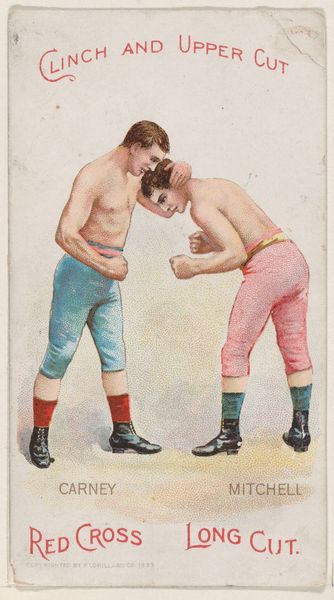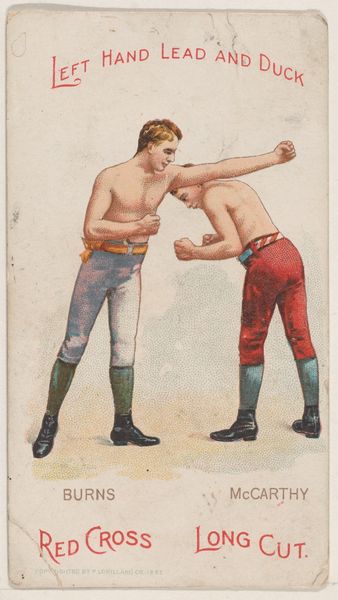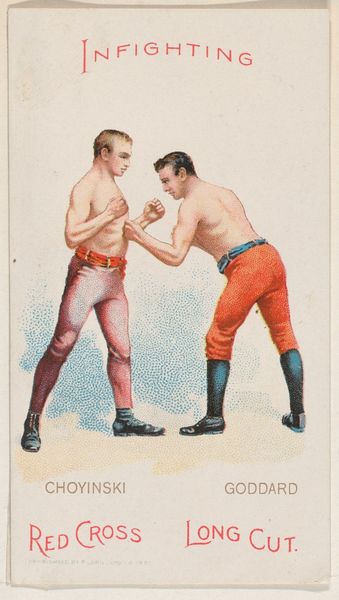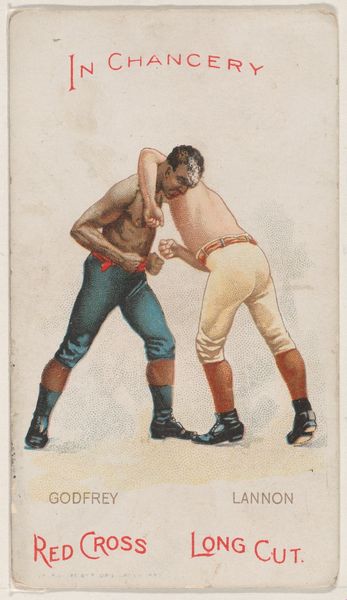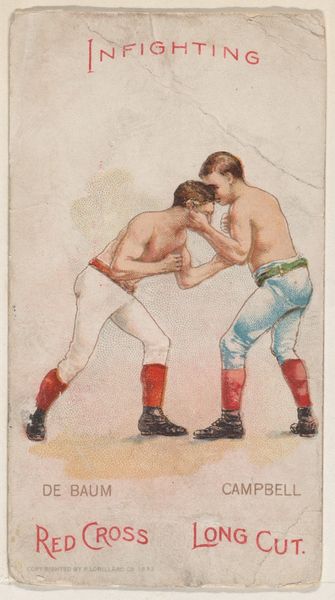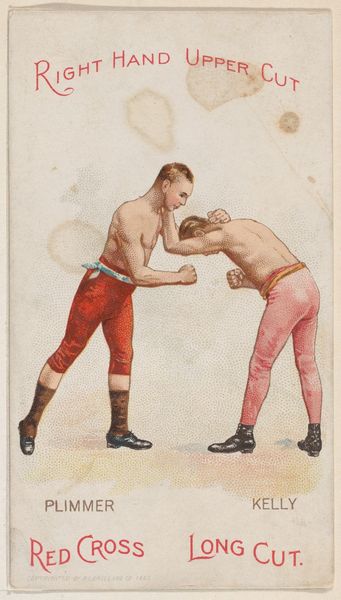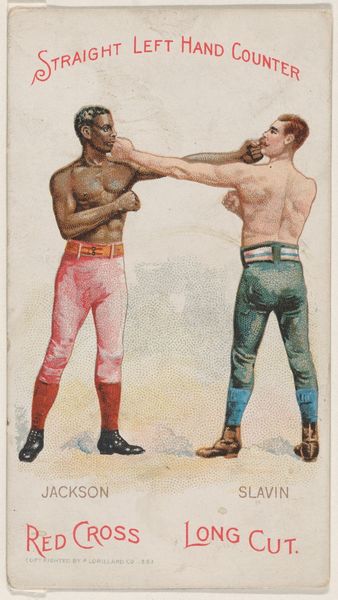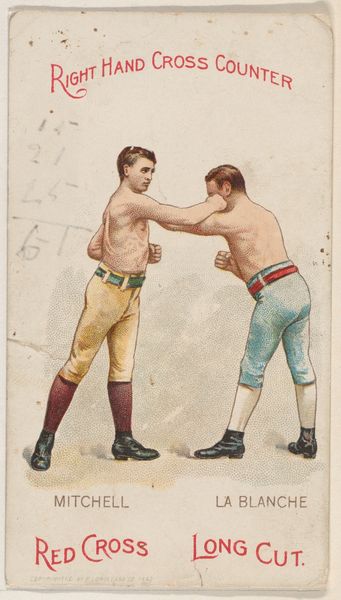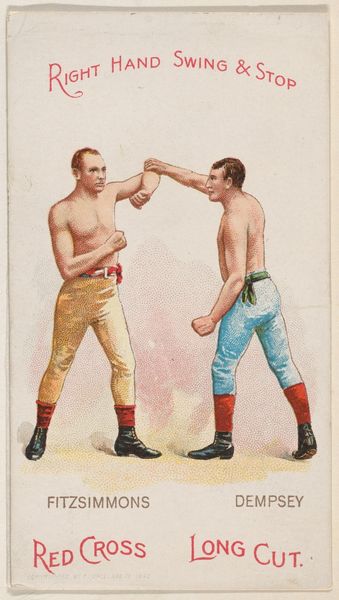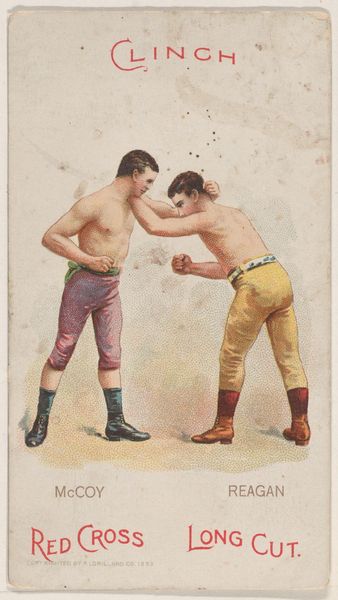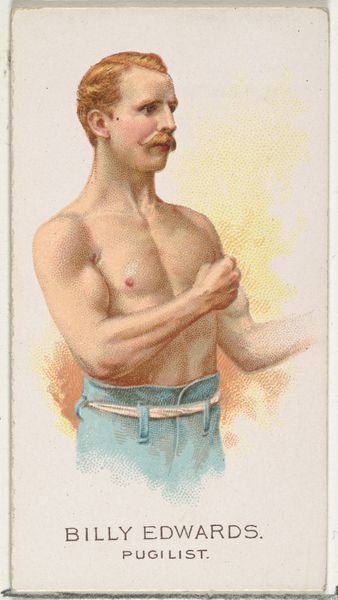
Back Heel, L.P.R., Jake Kilrain and Jem Smith, from the Boxing Positions and Boxers series (N266) issued by P. Lorillard Company to promote Red Cross Long Cut Tobacco 1893
0:00
0:00
drawing, lithograph, print
#
drawing
#
lithograph
# print
#
figuration
#
historical photography
#
yellow element
#
19th century
#
men
#
genre-painting
Dimensions: Sheet: 4 in. × 2 1/4 in. (10.2 × 5.7 cm)
Copyright: Public Domain
Curator: Here we have "Back Heel, L.P.R., Jake Kilrain and Jem Smith," a lithograph from 1893 produced by the P. Lorillard Company. It was originally made to promote Red Cross Long Cut Tobacco. Editor: The first thing that strikes me is the tension. Despite the rather quaint styling and pastel hues, there is an undeniable sense of coiled energy and bodily stress. Curator: That's astute. Boxing imagery carries a loaded history—tales of strength and conquest, yet also the cost on bodies, told and untold stories of masculinity and endurance. It's fascinating how P. Lorillard used that for their product. Editor: And not just masculinity. These images often tap into the darker sides of working-class masculinity, particularly around exploitation. Tobacco ads were everywhere at this time, creating norms, specifically targeting men. Curator: This piece is interesting symbolically, even in its directness. These two figures intertwined. Are they friends? Foes? Does it even matter? Maybe the intertwined aspect is the point. Conflict becomes… entangled identity, maybe. Editor: Entangled identity? I think that may give too much credit to what amounts to marketing imagery. Let’s think of race and class during the late 19th century, and which demographics were using tobacco at this time. Who were they trying to entice with images of virile physical engagement? The advertisement uses hyper-masculinity as a smokescreen… forgive the pun. Curator: Fair point. And there are no racial or class markers present; they could be anybody. By removing these things, are they, in turn, becoming a tabula rasa onto which anxieties can be projected? A visualization of internal conflicts maybe. Editor: Well, whichever message P. Lorillard was sending, its success is undeniable. It became deeply embedded into the popular visual culture of the era, creating enduring associations. Curator: What I appreciate most is the layering of symbolism: strength, commodification, identity, even societal anxieties distilled into a single, rather compact, image. Editor: Ultimately, it makes one reflect on what remains unseen. To look for the social stories woven into seemingly straightforward images—advertising or otherwise—is always useful.
Comments
No comments
Be the first to comment and join the conversation on the ultimate creative platform.
